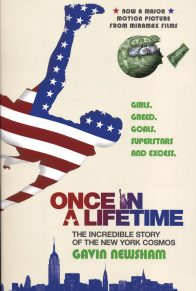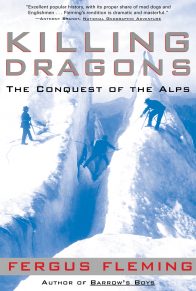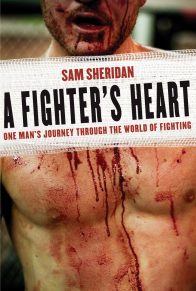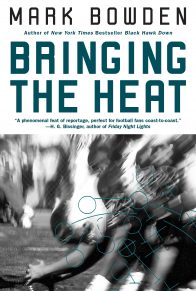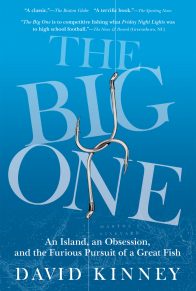Every horseman and horsewoman alive, from a superstar trainer like D.
Wayne Lukas to the most obscure dreamer in the backwaters of racing, wants to believe that among the babies in the barn that are just beginning racing careers there is the one. The big horse. That magical equine athlete who in the springtime of his third year on this earth can grow fast enough to win one–or, better, all three–of the races that make up the Triple Crown. The fact sheet on this famous series is pretty straightforward: a trio of races each worth $1 million at three different tracks contested at various distances in the span of five weeks.
The first leg, the most famous race in the world, is the Kentucky Derby, held on the first Saturday of May at Churchill Downs in Louisville at the distance of 1 1/4 miles. Two Saturdays later at Pimlico Race Course in Baltimore, Maryland, the distance shortens, barely, in the 1 3/16-mile Preakness Stakes. Three weeks after that, the 3-year-olds take on the marathon distance of 1 1/2 miles at Belmont Park in Elmont, New York.
The stakes transcend the purse money: a guaranteed $750,000 for the Derby, $650,000 for the Preakness, and $600,000 for the Belmont. In addition, Visa USA promises a $5 million bonus to the horse that sweeps all three events. But better, a victory in one Triple Crown event can turn a racehorse bought for $17,000 into a stud prospect worth upwards of $30 million. It means fame and national coverage in newspapers, magazines, and on television.
Best of all for the people who breed racehorses, who buy them, who train them, who ride them, even who bet on them, it means being right. In the 126 years of the series, only eleven horses have won all three races and given the people who loved and developed them that once-in-a-lifetime gift.
In pursuit of all this, racing people ignore the numbers that add up to terrible odds against them. Of the 35,078 registered Thoroughbreds foaled in North America in 1997–the crop eligible for the Triple Crown in 2000–only 10,936 would make it to the track to race as 2-year-olds, about 31 percent. By January 2000 only 387 of them would be nominated to run in the rich, prestigious three-race series–that’s about 1.1 percent.
By May 6, 2000, only nineteen would stand in the starting gate at Churchill Downs for the Kentucky Derby. That’s .005 percent of the entire crop of foals born in 1997 in North America.
These horses had earned their spot in the Derby by competing against the best of their generation and earning enough purse money to show that they belonged. Their owners were delighted to pay the fees: $30,000 for the Kentucky Derby, an additional $20,000 each for a spot in the gate at the Preakness and Belmont Stakes.
Owners with Triple Crown dreams, which means all of them, spend big money in the hopes of finding the big horse. In 1998, 8,275 of these would-be big horses were offered at auctions in North America. They were yearlings, unproven 1-year-olds. Still, owners paid $354 million for them. Why?
Over the twenty hours I spent at Belmont on June 5-6, 1999, a period replete with pain, panic, and exhilaration, I caught a glimpse of the many reasons.
I watched Wayne Lukas board an equine ambulance van with a veterinarian and a seriously injured horse while reporters and cameras clattered along behind.
I heard the weeping of the grooms and exercise riders from Lukas’s barn as his prize colt Charismatic spent a harrowing night hobbling in his stall awaiting surgery after the horse had taken a misstep in the stretch of the Belmont Stakes.
I had seen Lukas endure a morning grilling about whether or not the injury was his fault. But I also had seen how a first-time starter winning a maiden race could displace yesterday’s heartache with the faintest promise of glory down the Triple Crown road.
I decided then that for the next year I would travel along this trail myself. I would discover how perilous the journey is from that first step in the winner’s circle as a 2-year-old to a place in the starting gate at the Kentucky Derby as a 3-year-old the following May. Then on to the Preakness in Baltimore and the Belmont Stakes in New York in a chase of history over five grueling weeks.
I am a sportswriter. Say this in response to the question “What do you do for a living?” and it’s met with a smile and the words “Do you know [fill in the name of famous athlete]?” It doesn’t matter the questioner’s age or gender. Just the name of the profession conjures a frontrow seat to great athletic spectacles, cold beers, bonhomie, and, well, not a whole lot of real work. I do have good seats at sporting events. I am acquainted with some famous athletes, and the profession does offer good times. The cold beers, however, don’t flow until the late hours of long days, usually weekends–more often than not after talking to people who really don’t want to be talking to you–then furiously pounding a keyboard to make never-ending but always fast-approaching deadlines.
It is work, but I smile most of the time and have no complaints.
And it is this work that had me leaning over the rail of a paddock in the morning sunlight on June 6, squinting with other bettors at six horses like I was trying to determine the cut and clarity of a diamond. We were also looking at the tall gray-haired guy in the paddock, the one in a $3,000 suit and the bloodshot eyes behind ear-to-ear aviator shades.
He was D. Wayne Lukas, and his eyes were bloodshot because he had been up all night worrying about Charismatic. The day before, the big chestnut colt had come within a fractured foreleg of becoming the twelfth horse to capture the Triple Crown.
The terrible misstep had taken place only twenty hours before, in front of 86,000 people here at Belmont Park and millions more in TV land. The injury probably occurred at the top of the last turn as Charismatic swung wide, beginning what looked to be a determined drive down the stretch and into the record books. But out of the turn, the horse’s rider, Chris Antley, felt a bobble in the horse’s gait; then something he had never felt before atop Charismatic–a lack of power. Two other colts, Lemon Drop Kid and Vision & Verse, rolled by.
Antley knew instantly Charismatic was hurt. Sixty yards past the finish line, seconds after Charismatic held on to finish third, Antley leaped off the horse’s back, landed on the seat of his pants, scrambled to his feet, and lifted Charismatic’s left leg in his hand until an ambulance arrived, seemingly out of nowhere. Tears streaked Antley’s dusty face.
I was waiting at the paddock, because that’s what you spend most of your time doing when you’re a reporter. Waiting. For phone calls. For a city council meeting to end. For the final buzzer of a basketball game. For a horse to get out of surgery. You wait. You watch. You ask questions. You listen. You think a lot about what you’re doing. Eventually, you type it up.
On the other side of this grand old racetrack on Long Island, inside a cinder-block building atop a sterile table, Charismatic was surrounded by equine surgeons who were trying to save the colt’s life. It was 1:15 P.M. and Charismatic had been in the operating room for two hours. Lukas, however, did what he does 365 days a year: readied a horse to run.
At that moment, his job entailed saddling a filly named Cash Run who was about to make a trip to the track for her very first race. At two years old–think eighth grade in human dimensions–she was rattled by this new experience. Sweat glistened on her bay coat, turning it brighter in the same way melting ice highlights the color of a fine single-malt scotch.
She resisted Lukas’s attempt to hang a white bridle on her snout, shuffling back a few steps and tossing her head left and right like a boxer slipping punches. Lukas was wrung out, too, from the events of the past twenty-four hours.
Yesterday, he was the Hall of Fame trainer on the verge of celebrating that recent honor by sweeping the Triple Crown–the Kentucky Derby, Preakness, and Belmont Stakes. Today, he was fielding the edgy and familiar questions about why his horses break down so often.
Yesterday, he was his sport’s most accomplished trainer, running a storybook horse in a nationally televised $1 million race that, if he won, meant a $5 million bonus to the owners of Charismatic. Today, he looked all of his sixty-three years as he tried to calm his first-time starter for a maiden race of 5 1/2 furlongs (a furlong is 1/8 of a mile) with a purse of $40,000 before a crowd of barely 11,000.
Lukas’s mind may have been stuck on that distant corner of the backside, but his eyes were appraising the half waltzing, half polkaing bundle of nerves before him. Here is all Lukas, or for that matter anyone else, knew about Cash Run: One, she was sired by Seeking the Gold from a dam named Shared Interest, and these bloodlines had been rich enough to fetch $1.2 million at the 1998 Keeneland July Sale. Two, she was, in the parlance of the game, an “outstanding individual,” which meant she was muscled and had reasonably straight legs and excellent conformation, which meant visually she appeared balanced. Three, she liked to run fast in morning workouts. Four, her owner, a Florida computer magnate named Satish Sanan, was Lukas’s latest deep-pocketed client; in two years, he had already spent $100 million in search of fast horses but so far had found modest success.
The business of horse racing is not much different from the “new economy” spawned by the Internet, the dot-com companies and new millionaires. Except the sport of kings is three centuries old and doesn’t have as many Wharton Business School graduates or software-design-engineer basement geniuses involved. But like the new economy, horse racing is more about possibilities than past performance. As they say in breeding sheds, “Breed the best to the best and hope for the best.” Another maxim of the sport is: Run them.
Lukas was preparing to follow the last directive as he gave Jerry Bailey a leg up on Cash Run. The jockey danced the filly around the saddling circle and vanished into the tunnel leading to the racetrack. Lukas broke for the owner’s box, but Sanan was not even here for a first glimpse of what $1.2 million had bought him.
Once in his seat, Lukas peered through binoculars to watch Bailey move Cash Run into the starting gate. The trainer tossed his shoulders back and stood stiffly when the words of track announcer Tom Durkin echoed from the sound system: “They’re all in line.” Then a bell sounded and the gates crashed wide open.
Bailey hustled Cash Run out first. She hit the quarter-mile mark two lengths ahead in 22 2/5 seconds. Bailey had a firm hold on her as she ran a half mile still ahead by two lengths in a quickening 46 seconds. As they entered Belmont’s wide sweeping turn, the jockey crouched down and loosened the reins. With parabolic precision, Cash Run’s lead increased to four lengths, six lengths, and then eight lengths as she reached the head of the stretch. Bailey peeked under his arm to see who was behind him. There was no one.
His hands moved gently in rhythm from her ears to her neck as Cash Run moved ten lengths, then twelve lengths ahead of the second-place Shannonaire. Bailey never used his whip, which bent backwards in the air like an antenna on a fast car. When Cash Run crossed the finish line, she was a 15 3/4-length winner in a time of 1:04.27.
Lukas hustled through the clubhouse toward the track, his pace picking up as he reached the grandstand patio. The filly’s groom was already out on the dirt with a bucket, a sponge, and a huge smile, waiting for Bailey to bring Cash Run to the winner’s circle.
When Cash Run arrived, he grabbed a sponge and squeezed some water on the filly. Then Bailey pranced her forward, turned her sideways, and let the track photographer flash a photo. The jockey bounded off her back, patted her affectionately on the withers, and unhooked his saddle. Then Lukas and Bailey strode back though the tunnel toward the paddock.
“She’s a beauty, Wayne–a real push button. Didn’t have to use her much at all,” Bailey told Lukas as adrenaline quickened both their strides.
The pair stopped at a television monitor hanging in the shade about halfway up the tunnel. They watched the replay of Cash Run crushing her opposition. When Bailey watched the two-length lead he took into the turn grow into eight lengths, he just shook his head. “No wonder I couldn’t see anybody,” he mumbled. Lukas let the corners of his mouth part as steadily as Cash Run motored off with the lead. He didn’t grin until the replay showed her crossing the finish line. Nearby, a security guard whistled in amazement.
“That’s one hell of a filly, Mr. Lukas,” he said.
“By next year, she’ll be the best 3-year-old in the country,” Lukas said, matter-of-fact.
Meanwhile, back in his corner of the backside, Charismatic was being wheeled into a recovery room to sleep off the two-and-a-half-hour surgery. The displaced lateral condylar fracture, a break extending about three inches from the ankle up the cannon bone, was fixed. As was the fractured sesamoid in the ankle joint. The prognosis for Charismatic was excellent.
Lukas, too, looked mended. He hustled back to his barn, accepting handshakes and backslaps and crackling with big plans. Because Cash Run was a filly, she was a long shot for the Kentucky Derby as well as the other Triple Crown races. In 125 years, only three fillies had won the Derby. That hardly mattered to the trainer–he had trained one of them, Winning Colors, who won in 1988. He also had another half dozen expensive colts in his barn, a r’sum” with an unprecedented $200 million plus in purse earnings, twelve victories in Triple Crown races, as well as the odds-defying optimism possessed by all horsemen at this time of year.
I too, suffer from this same optimism because I am a horseplayer, which most of us like to think is a higher calling than being merely a gambler. Rational or not, we believe we use our brain as well as intuition to pick horses who we think–no, know–are going to win.
Most of the time, I travel for my work. When you’re on the road, there are too many afternoons or evenings to kill in a hotel room. Movies and mall walking have never done it for me. I don’t play golf. Don’t shop for antiques. I can nurse a meal, a drink, and a book for only so long by myself in a restaurant.
So I go to racetracks–more than seventy of them at last count, in seven countries. I’ve driven two hours from New Orleans to Rayne, Louisiana, on a Sunday to watch Cajun farmers and horsemen race quarter horses and Thoroughbreds for anywhere from $300 to $10,000 of their own money at an unsanctioned track. I’ve drunk Budweisers, eaten boudin sausage, and learned the hard way that to collect a 3-1 bet on “daylight” meant my horse had to win by three lengths.
I paid for my wife’s engagement ring by hitting a trifecta bet–choosing the three winning horses in order–in a race for Appaloosas at Arapahoe Park outside Denver.
I’ve been escorted by four bowler-wearing ushers to the riffraff section of the Queen of England’s track, Ascot Racecourse, because I hadn’t worn a morning coat. I caught a ride back to London with a cabbie deemed similarly ill attired who also didn’t mind being invisible to the Royals. I had no idea how or on which horse to bet in Nairobi, Kenya, but recognized the noisy jubilation of the winning: bettors as well as the international gesture favored by losing ones: ripping up the ticket.
In short, I subscribe to the sentiment attributed to an unnamed horseplayer that “A bad day at the races is better than a good day anywhere else.”
My yearlong pilgrimage with a purpose was no different. Before it all was over, I got to know a New Jersey couple, Jim and Terry Scatuorchio, who were fortunate enough to experience the highs and lows of the Triple Crown with their first big horse. I enjoyed an evening of karaoke at a dive called the 100 to 1 Lounge with a Washington State fast-food baron, Mike Pegram, who won the 1998 Derby with Real Quiet but preferred the ushers and bartenders on the littered front sides of the nation’s racetracks to his fellow owners who inhabited the spotless box seats and private dining rooms at the tracks. I learned about General Sheik Mohammed bin Rashid al-Maktoum, minister of defense of the United Arab Emirates, Crown Prince of Dubai, and the single most powerful global force in horse racing, as well as Fusao Sekiguchi, an entrepreneur from Japan who, in a Derby first, brought geishas and a $4 million colt to Churchill Downs.
I was struck by the odd coupling of Harold Rose, an eighty-eight-year-old Jewish owner/trainer, and Roger Velez, a forty-three-year-old Puerto Rican jockey and recovering alcoholic. Both were onetime stroke victims. Both had faith that a small-time horse would deliver their once-in-a-lifetime dream. These men were a new breed of owners far removed from the aristocrats of the past, such as the Whitneys, Vanderbilts, Phippses.
The trainers and jockeys, too, couldn’t have been more different. The two most famous horse conditioners, Lukas and Bob Baffert, were graduates of quarter horse racing in the Southwest. Their rivalry shook each other up along with the once genteel business of Thoroughbred racing. Another trainer, Neil Drysdale, was an educated Englishman whose apprenticeship took him from show horses to South American breeding farms to the Hall of Fame. He was part Renaissance man, part horse whisperer.
Jenine Sahadi was perhaps the best female trainer in the history of the sport. She was thirty-seven, a veteran of racetrack publicity, and constantly subjected to rumors that her boyfriend, husband–the men in her life actually trained her horses.
The sport’s rising training star, Todd Pletcher, thirty-two, had a college degree but opted to follow the lessons he’d learned from his trainer/father as a boy tagging along the grits and hard-toast circuit of second-tier tracks.
Of the three jockeys who each captured a leg of the Triple Crown in 2000, two–Pat Day and Jerry Bailey–were in their mid-forties and had conquered addictions in time to earn spots in the Hall of Fame and reputations as the best riders in the world.
The third, Kent Desormeaux, was a young Cajun who was deaf in one ear as a result of a spill and had learned his trade as a boy in places like Rayne, Louisiana, riding in those crazy match races on the bush tracks that had come to captivate me.
Before it was all over, the road to the Triple Crown led me to horse racing’s heaven: Saratoga Springs, New York, where old-world class bumped up against working-class charm. To the sport’s rich, wildly thumping heart: the Keeneland September Sale, where buffed-up horses pumped up free-spending millionaires in cutthroat auction bidding. And finally to its soul: the backsides of racetracks in California, Florida, Kentucky, Maryland, and New York, where old horses, young horses, cheap and expensive horses worked alongside one another in the mornings and competed against one another in the afternoons.
Before it was all over, I would have a colt tell me–yes, a colt–that he would win the Kentucky Derby. On Belmont Stakes day, I’d dream of a midnight flight to Paris on the Concorde after picking four of four winners on a Pick Six ticket with a guaranteed $1 million pool. And I’d come to understand what every horse owner, trainer, and jockey already knows about the sport: Hope is robust, it’s the horses who are fragile.
On the road to the Triple Crown 2000, I waited. I watched. I asked questions. I listened. I thought about it a bunch. I typed it up.
Copyright ” 2001 by Joe Drape. Reprinted with permission from Grove Atlantic, Inc. All rights reserved.





